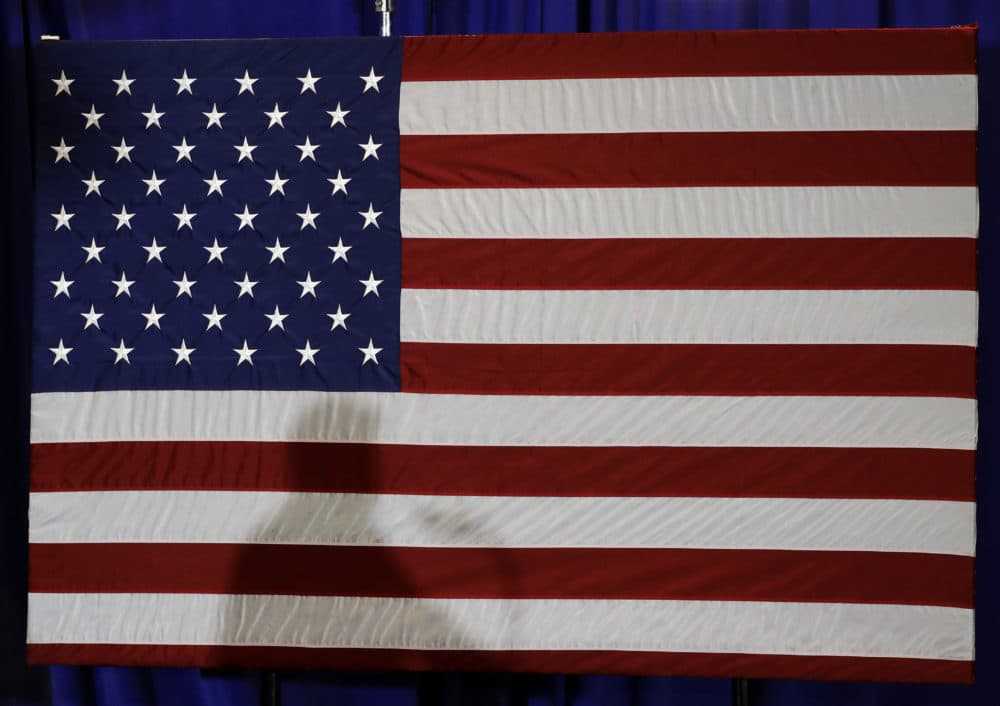Advertisement
Stanford Researchers Bring Together People With Different Political Views
Resume
Stanford researchers wanted to test a theory: If you put Americans with different views together, it might change their minds.
They wanted to find out more about the political divide in the U.S., and they had a hypothesis that people on opposite sides of the aisle aren’t actually so sharply divided.
Researchers put 526 Americans at a resort in Texas for a weekend in September. The nonpartisan group Helena funded the $3 million weekend.
The social research organization NORC at the University of Chicago found just the right mix of diverse opinions, and Stanford’s researchers dug in as they had conversations about everything from immigration to health care.
Researcher Larry Diamond, a senior fellow at Stanford's Freeman Spogli Institute for International Studies, says the single most important takeaway from their study was after three and a half days of talking about political issues — not politicians or candidates — the percentage of people who thought American democracy was doing “reasonably well” doubled.
Diamond says they saw many Republicans edge away from their “hostile” positions on immigration, and Democrats tended to back away from staunch positions on topics such as taxation or the universal $15 minimum wage.
They proved their theory: People on opposite sides of the aisle found themselves gravitating toward the center, he says, after discussing the issues in groups of differing opinions, hearing first-hand stories and listening to experts.
“I think it wasn't just coming face to face,” he says. “I think it was the magic of deliberation under good conditions, which don't generally prevail in our country today.”
Interview Highlights
On the researchers’ key findings
“I actually think that the single most important thing we found is that after deliberating for three and a half days with people often who sharply disagreed … and talking about issues, not candidates and personalities, but immigration, taxes, health care, the environment and foreign policy, the percentage of people who thought our democracy was doing at least reasonably well doubled from 30% to 60%. And then we found that there was significant change in opinion on the issues that the tendency was for Republicans to edge away from extremely, implacably hostile positions on immigration, and Democrats backed away from support for positions on taxation and spending. For example, universal basic income or the baby bonds proposal that looked like they were going to spend a lot of money that we might not really have.
“Most of their interaction was with one another in small groups. But then they did hear from experts as well as in plenary sessions. And they also heard presidential candidate Michael Bennett speak to this issue and say, 'Hey, I’d at least like a cut out because for certain regions of the country, because the cost of living isn't the same in every region of the country. And $15 might put a lot of people out of work in some parts of the country.' ”
On why he believes people in the study started to understand and accept different political opinions
“The good conditions [of the research] were first of all, we gave them a kind of orienting set of facts and competing arguments on each issue. Second, they had access to competing points of view there in our plenary sessions. We gave them presidential candidates from the two parties. But third, they heard not only the different arguments of their fellow Americans, but the different life experiences.
“And when Republicans had to sit in the room and hear actual immigrants talk about their motives for immigrating, there were dramatic changes away from Republican hostility to immigration and the percentage of people, particularly Republicans, who were willing to increase visas for skilled workers or unskilled workers. It jumped to 80% of the whole sample from 60% for skilled workers and the percentage of Americans who were willing to force undocumented immigrants to return to their home countries before trying to come to the U.S. and seek entry, that declined in our sample from 46% to 25%. And this was the result of the fact that Republican support for that proposal through the deliberation process plummeted.”
Jill Ryan produced and edited this interview for broadcast with Kathleen McKenna. Serena McMahon adapted it for the web.
This segment aired on October 17, 2019.
